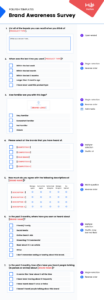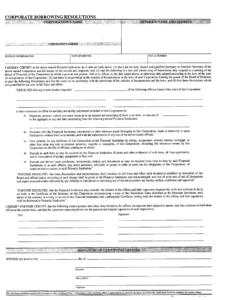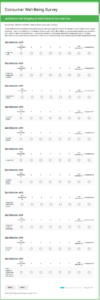A minimum advertised price policy, also known as MAP policy, is a contract between a manufacturer and a retailer that sets a minimum price that the retailer can advertise a product for. MAP policies are used to protect brand image and prevent retailers from engaging in predatory pricing. By setting a minimum price, manufacturers can ensure that their products are sold at a consistent price across all channels. This helps to maintain a level playing field for all retailers and prevents consumers from being confused about the price of a product.
MAP policies are typically used for products that are sold online or through multiple retail channels. Manufacturers may also use MAP policies to protect their authorized dealers from competition from unauthorized dealers. A minimum advertised price policy template can help you create a policy that is compliant with state and federal laws and that will protect your brand image.
How to Create a Minimum Advertised Price Policy
When creating a minimum advertised price policy, there are a few things you should keep in mind. First, you need to make sure that the policy is compliant with state and federal laws. Many states have laws that prohibit manufacturers from setting minimum prices for their products. You should also make sure that the policy is reasonable and does not harm competition.
Once you have considered these factors, you can start to create your MAP policy. The following steps will help you get started:
- Define the Products Covered by the Policy: The first step is to define the products that are covered by the policy. This should include all of the products that you sell that are also sold by other retailers.
- Set the Minimum Advertised Price: The next step is to set the minimum advertised price for each product. This is the lowest price that a retailer can advertise the product for. You should set the price at a level that is fair to both retailers and consumers.
- Communicate the Policy to Retailers: Once you have set the minimum advertised price, you need to communicate the policy to your retailers. You can do this by sending them a copy of the policy or by posting it on your website. You should also make sure that the policy is included in your sales agreements with retailers.
- Monitor Compliance with the Policy: Once the policy is in place, you need to monitor compliance with the policy. You can do this by checking the prices of your products online and in retail stores. You should also investigate any reports of retailers violating the policy.
Benefits of Using a Minimum Advertised Price Policy
There are a number of benefits to using a minimum advertised price policy. These benefits include:
- Protects Brand Image: A MAP policy can help to protect your brand image by ensuring that your products are sold at a consistent price across all channels.
- Prevents Predatory Pricing: A MAP policy can help to prevent predatory pricing by retailers who are trying to sell your products below cost.
- Maintains a Level Playing Field for Retailers: A MAP policy can help to maintain a level playing field for all retailers by ensuring that they are all selling your products at the same price.
- Prevents Consumer Confusion: A MAP policy can help to prevent consumer confusion by ensuring that consumers are not confused about the price of your products.
Conclusion
A minimum advertised price policy can be a valuable tool for manufacturers who want to protect their brand image, prevent predatory pricing, and maintain a level playing field for retailers. By following the steps outlined above, you can create a MAP policy that is compliant with state and federal laws and that will protect your business.
MAP policies are becoming increasingly common as more and more manufacturers realize the benefits of using them. If you are a manufacturer, you should consider implementing a MAP policy to protect your brand and your business.
FAQ
What is a Minimum Advertised Price Policy Template?
A Minimum Advertised Price Policy Template is a document that provides a framework for creating a MAP policy. The template includes all of the necessary information that manufacturers need to create a compliant and effective MAP policy.
What are the Benefits of Using a Minimum Advertised Price Policy Template?
There are a number of benefits to using a Minimum Advertised Price Policy Template, including:
- Saves Time: A template can save manufacturers time by providing a starting point for creating a MAP policy.
- Ensures Compliance with Laws: A template can help manufacturers to ensure that their MAP policy is compliant with state and federal laws.
- Protects Brand Image: A template can help manufacturers to protect their brand image by ensuring that their products are sold at a consistent price across all channels.
How Do I Create a Minimum Advertised Price Policy Using a Template?
To create a minimum advertised price policy using a template, manufacturers should follow these steps:
- Choose a Template: The first step is to choose a template that meets the needs of the business.
- Customize the Template: Once a template has been chosen, manufacturers should customize it to fit their specific needs.
- Communicate the Policy to Retailers: Once the policy has been created, manufacturers should communicate it to their retailers.
- Monitor Compliance: Manufacturers should monitor compliance with the policy to ensure that retailers are following the rules.


